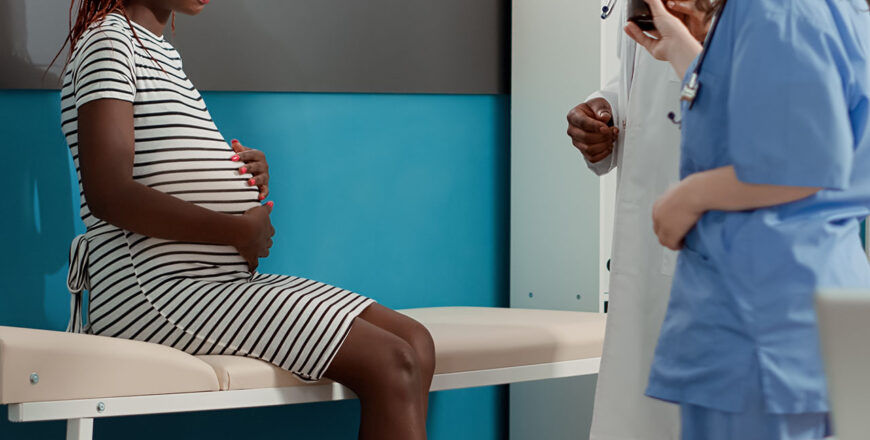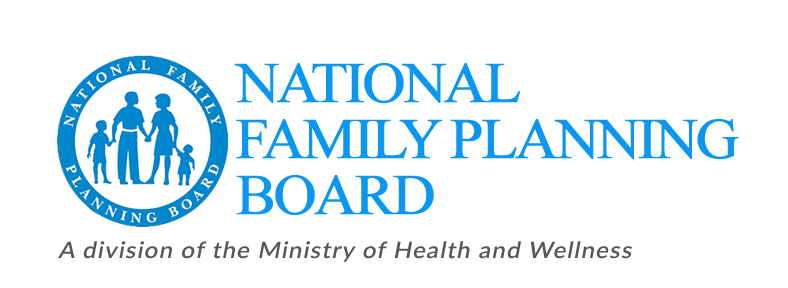
Essential SRH Checks For Females
At least four antenatal visits are the advice from the World Health Organization to mothers-to-be. It comes against the background of monitoring the health of the woman and the progress of her pregnancy allowing for medical interventions, if necessary. One visit is recommended by doctors in the first three months (known as a trimester), another in the sixth month and two more – in the seventh and ninth months.
Among these four antenatal visits are a blood test, blood pressure and urine testing, weight, and height. Though it may sound routine like any other doctor’s visit the medical personnel are looking for specifics. Among the specifics that they monitor are anaemia, STIs, infections, the size, growth, and positioning of the baby in the uterus.
Attendance at antenatal care was 98.7 per cent for 2016-2021 locally, with more than three-quarters of the women visiting government-operated clinics.
The Reproductive Health Survey (RHS) 2021 outlines 51.8 per cent of women have ever had a gynaecological exam. Though the figure is unimpressive, it is a marked improvement over the 43 per cent in 2008 – the previous survey year. The benefits of the examination are the early detection of asymptomatic pelvic inflammatory disease, breast and ovarian cancer, ovarian cysts, and sexually transmitted infection. Patients should remember that medical doctors must discuss with them any need to have a gynaecological exam on them. The need is mostly prompted by a patient’s symptoms or history.
RHS data further show marginal improvements have also been seen with Pap smears (or Pap test) with two out of every three women (67.2 per cent) having had a pap smear. A Pap smear is a screening method used to check for cervical cancer and can be part of a general pelvic exam. World renowned medical centre the Mayo Clinic, describes the Pap smear as “a painless procedure, done at a doctor’s office, that gently removes cells from the surface of the cervix and the area around it so they can be checked under a microscope for cervical cancer or cell changes that may lead to cervical cancer.”
In 2008, it was 62 per cent. Preliminary key finding from the Jamaica Health and Lifestyle Survey III, conducted between 2016 and 2017, cited approximately 70 per cent of women 15 to 64 years have ever done a Pap smear, with those 35 to 44 years showing the highest prevalence. Of the women aged 15 to 54 years less than half had done the pap test in the last three years leading up to the survey. Approximately 75 per cent of women with primary or lower-level education had done a pap smear compared to 64 per cent of those with secondary education, and 69.1 per cent with post-secondary education.
Monthly breast checks allow for early detection of changes, and follow-up with the health care provider. Familiarity with how the breasts look and feel ranks is the primary reason for performing a breast self-examination. The reproductive survey states 70 per cent of female respondents 15 to 49 years had ever performed a breast self-exam bettering the reported 65 per cent in 2008. JHLS III identified 75.7 per cent of women aged 20 to 64 reported doing a self-exam, and 71 per cent had the test done by a healthcare professional.
In the ten years leading up to the JHLS, the popularity of breast self-exams increased from 42 per cent to 55 per cent. If mothers and guidance counsellors teach daughters and their female students respectively how to check their breasts, further improvements in the statistics can be made. It is not uncommon for lumps to appear in the breasts of growing girls but further checks by a doctor will be needed if there is a change in the shape, size, colour, appearance of pitting of the skin of the breast, fluid oozing from the nipple, or the nipple turning inward, lumps that do not go away after 4 to 6 weeks; or are firm and fixed.
Finding a lump, having to undergo additional tests and overestimating the benefits of self-exams -are among the limitations and risks of a breast self-exam, according to the Mayo Clinic.
Successful sexual and reproductive health (SRH) outcomes are dependent on the ability to identify changes in the body, respond with initiative-taking steps to have them assessed, effective client-doctor communication and follow through with the established treatment recommendations.



Recent Comments